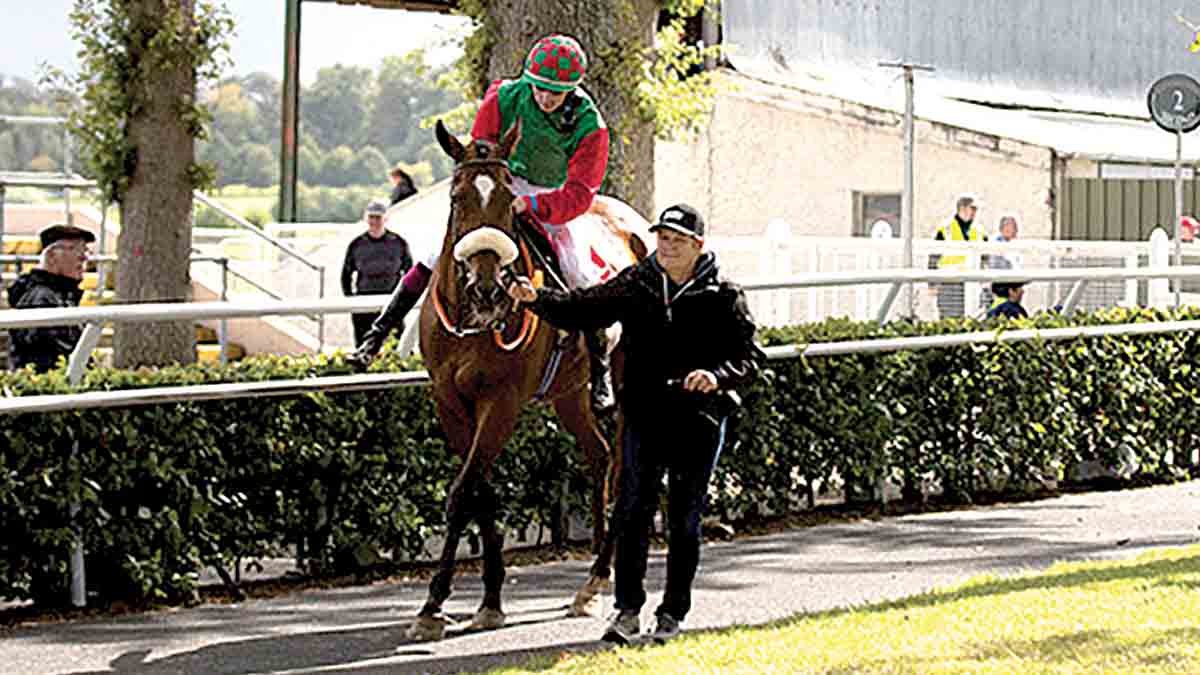This article was written by Michael Doyle, student at Ormonde College of Further Education on work experience with The Kilkenny Observer
It’s that time of the year again. With the last Thursday of January fast approaching, it can only be the Thyestes Chase. A national horseracing event steeped in history; hundreds of racegoers new and old across Ireland attend Gowran Park for one of the biggest races of the year. The Thyestes Chase is a handicap steeplechase which is ran over 3 miles and 1 furlong (5,029 meters). Sponsored by bloodstock auctioneers Goffs, a maximum of 18 competitors take part in the race, having to jump over 17 fences to win the honors and compete in a prize fund of €100,000. Ahead of the 70th edition of the Thyestes Chase, we look at the rich history of the Thyestes Chase, how it came to be, and the different types of horse racing.
Where does the Thyestes Chase come from?
The name of the race comes from the racehorse, Thyestes, who was named after the King of Olympia in Greek mythology. Major Vincent McCalmont of Mount Juliet took over the responsibility of breeding Thyestes, with Atty Pearse overseeing his training at Stockbridge, Wiltshire. While he only ever ran in and won two races, the National Breeders Produce Stakes at Sandown Park (over 5 furlongs), and the Rous Memorial Stakes at Goodwood (over 6 furlongs), this success earned him the rating of being the third-best two-year-old in 1930. Unfortunately, injury curtailed what should have led to further racing victories, then he was moved to Yorkshire, and retired to stud.
To celebrate his rich and short-lived career, the Thyestes trophy was first unveiled by Major Dermot McCalmont at the Kilkenny Show, for a horse race of horses aged 5 years old. A horse owned by Mr. John McEnery of Rossenarra Stud, Kells, and ridden by his son Martin, claimed the trophy. The McEnery family later presented the trophy to Gowran Park for what would be known as the first running of the Thyestes Chase. The first Thyestes Chase was run in 1954. Since then, it’s had many famous winners such as Arkle in 1964, Hedgehunter in 2004, and Numbersixvalverde in 2005, all of whom would go on to win the Aintree Grand National.
Types of Horse Racing
Handicap
A handicap race is a race where horses face the challenge of being handicapped by carrying different weights supplied by the handicapper, depending on the age, quality, and past performances of the horse. Better horses carry heavier weights, while other horses carry less weights, in an aim for equal competition. The reasoning behind handicaps is to provide a competitive edge in the race, an interest to see which horse can get the better of their respective handicap, and which horse could take advantage of their lesser handicap. Examples of handicapped races include the Aintree Grand National and the Melbourne Cup.
Steeplechase
The steeplechase is a horse race that features fences. The steeplechase first originated in Ireland in the 18th Century, where horseraces would be measured from one church steeple to another, jumping over ditches and other obstacles in between. This would later be known as steeple chasing. Examples of steeplechase races include the Aintree Grand National and the Grand Steeple-Chase de Paris.
Flat
A well-known form of horseracing, the Flat racing season runs from mid-March to mid-November, with turf being most frequently used for track surfaces in Europe. The most common distances for flat racing are between five and twelve furlongs (1.0 and 2.4 km). Examples of Flat races include the Prix de l’Arc de Triomphe and the Epsom Derby. Other types of horse races include Hurdle racing, Endurance racing, and Harness racing.
In conclusion, The Thyestes Chase is a wonderful race, with a great history. Here’s hoping that the 70th edition of the Thyestes Chase is truly one to remember for jockeys, owners, trainers, punters, and everyone associated with Gowran Park. The odds are on for a great day!

















